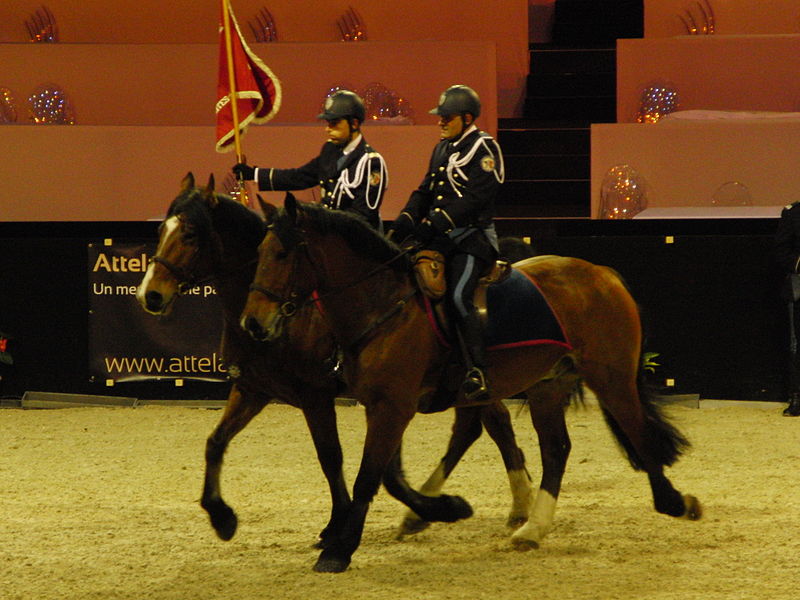The Cob Normand: draught and saddle horse
The Cob (stocky type), in Normandy as in England, is a “two-purpose” horse that can be harnessed or ridden. It is powerful and active, especially at the trot and in the carriage.

Stemming from the 19th-century “Norman Carrossier” (a post horse with Thoroughbred and Norfolk Roadster blood), it was long described as a half-blood. Two types were distinguished: The light Cob, close to the blood, with long tail, close to the ground, deep chest, wide hips. It has been absorbed by the saddle horse.
The large “cultural” Cob, “over coupled” (tail cut off), close to the draught horse but with more nerve impulses, well built, well limbed, attached to the heavy horse breeds. This is today’s Cob.
Since 1999, only foals from parents who are both Norman Cobs are declared Norman Cobs. If a Cob stallion mates with another mare, the offspring will be designated “draft horse“. Numbers are small, but the breed is enjoying a renaissance.
Caractère et aptitudes du cheval
A quiet, calm, docile horse. Enduring and energetic, it is the lightest and most athletic of draught horses. Able to trot, its gaits are bright, high, and energetic.
Utilisations du cheval
This light draught horse is an excellent saddle horse, with perfect aptitude for both leisure and competition driving.
Morphologie du cheval
Distinguished. Straight profile sometimes arched. Open nostrils. Well set ears. Half-blood type body, close to the ground, a little cubic, fleshy but harmonious. Nice, strong neck. Extended withers. Deep chest. Round ribs. Straight, relatively short back. Straight loins. Wide hips. Double, muscular croup. Limbs strong, lean, clean, without heaviness, less massive than those of heavy draught horses. Shortened tail in France. Coat: bay, chestnut, sometimes auber or gray. Height: 1.60 to 1.65 m. Weight: 550 to 800 kg.


